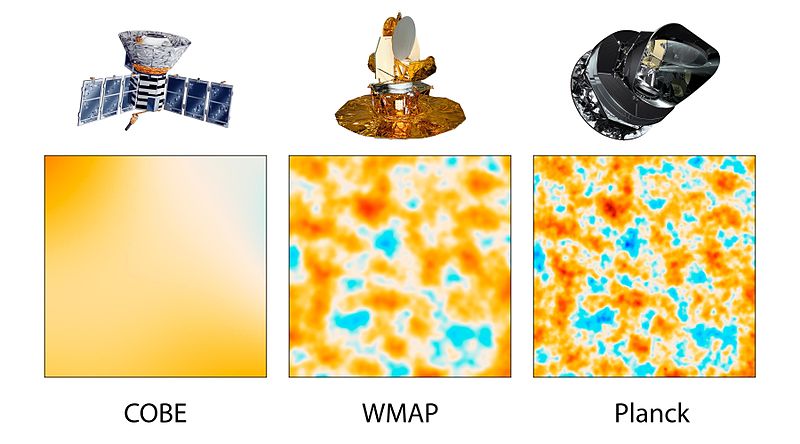Fil:PIA16874-CobeWmapPlanckComparison-20130321.jpg

Storlek på förhandsvisningen: 800 × 444 pixlar. Andra upplösningar: 320 × 178 pixlar | 640 × 356 pixlar | 1 024 × 569 pixlar | 1 280 × 711 pixlar | 3 600 × 2 000 pixlar.
Originalfil (3 600 × 2 000 pixlar, filstorlek: 429 kbyte, MIME-typ: image/jpeg)
Filhistorik
Klicka på ett datum/klockslag för att se filen som den såg ut då.
| Datum/Tid | Miniatyrbild | Dimensioner | Användare | Kommentar | |
|---|---|---|---|---|---|
| nuvarande | 23 mars 2013 kl. 02.48 |  | 3 600 × 2 000 (429 kbyte) | Nagualdesign | White background. I tried to upload this as a derivative file but Derivative FX kept hanging. (IE9 user.) |
| 22 mars 2013 kl. 04.31 |  | 3 600 × 2 000 (421 kbyte) | Drbogdan | User created page with UploadWizard |
Filanvändning
Följande sida använder den här filen:
Global filanvändning
Följande andra wikier använder denna fil:
- Användande på ar.wikipedia.org
- Användande på de.wikipedia.org
- Användande på el.wikipedia.org
- Användande på en.wikipedia.org
- Användande på es.wikipedia.org
- Användande på eu.wikipedia.org
- Användande på fi.wikipedia.org
- Användande på fr.wikipedia.org
- Användande på he.wikipedia.org
- Användande på id.wikipedia.org
- Användande på ig.wikipedia.org
- Användande på it.wikipedia.org
- Användande på ko.wikipedia.org
- Användande på nl.wikipedia.org
- Användande på pl.wikipedia.org
- Användande på pt.wikipedia.org
- Användande på ru.wikipedia.org
- Användande på ru.wikinews.org
- Användande på sl.wikipedia.org
- Användande på sr.wikipedia.org
- Användande på uk.wikipedia.org
- Användande på vi.wikipedia.org
- Användande på zh.wikipedia.org

